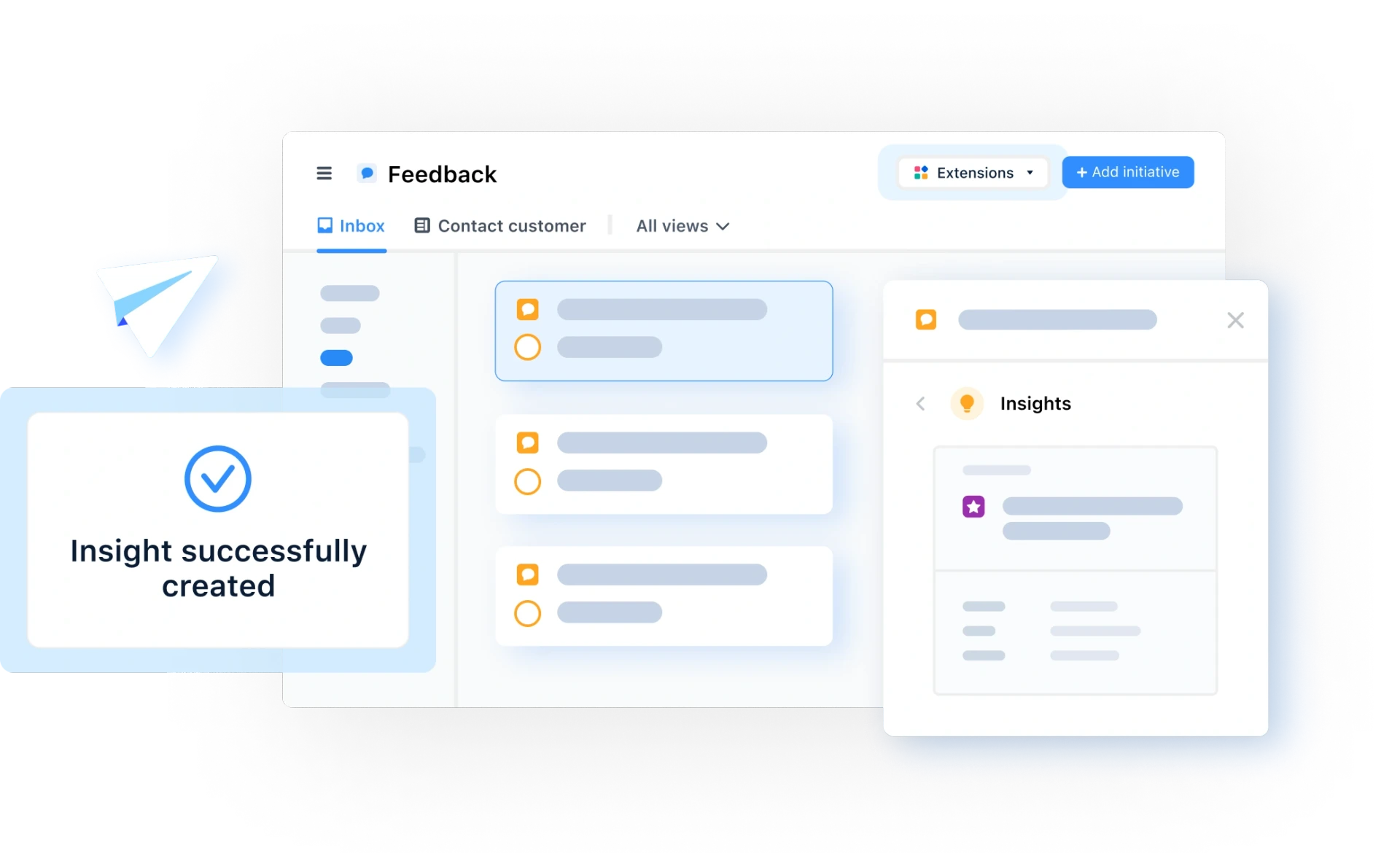Customers part with their cash to use products to help them accomplish their daily goals. As they use these products they regularly provide feedback, feedback in many forms, via various channels, and at different times.
Customer feedback is any information that customers provide about a product. It can be negative or positive.
While product teams would love to receive positive feedback, even if it is negative it is imperative to collect this feedback and triage it to then determine how to act on the feedback (if you decide to).
What does it mean to triage feedback?
Triaging feedback means ensuring that the feedback has been looked at, tagged, understood, and linked to the correct problem.
Different teams will be the first line of defence depending on the feedback provided.
For example, if customers report a bug then the customer support team may receive this feedback first as they are the first to hear about this issue. If there is a customer that is upset about a recent price hike then the sales team would receive this feedback.
Whichever team it is, if the feedback is related to customers’ (and users’) experience with the product then it needs to be directed back to the product team. More specifically the product manager who manages the product.
Product managers determine the “what” and “why” of the products they manage. Along with their many responsibilities they also decide what to work on and when.
This is why it’s imperative for product related feedback to be triaged so that they can prioritize initiatives as they work to accomplish business goals with the product and improve the user experience.

Who should triage customer feedback?
There is no team member in a company who solely owns this task. Rather, this should be a company process that all key members follow. And doing this is easier when a tool is utilized to capture and triage feedback.
If a member of the sales team speaks to a prospect who is not interested in your product due to a missing feature, that account executive should triage this feedback.
If a legacy customer has reported a painful bug in your product to your customer support team, that customer support representative should triage this information.
Whoever receives the feedback should triage it as soon as they can; pass it along to the product team via the appropriate channel with the required information.
If this means opening up your feedback tool, documenting the feedback with the respective information, and tagging the appropriate product manager, then do so.
While feedback can be recorded manually (in an excel sheet for example) I highly advise against this.
Why? Because it’s a cumbersome and time-consuming process.
What happens with customer feedback?
Upon receiving customer feedback product teams dig deeper into the feedback provided.
They work to understand why customers are making the request(s), while also ensuring that the feedback benefits their entire customer base.
Some of the actions they take involve understanding how many of their customers have similar feedback as well as estimating the value that taking advantage of any opportunities related to the feedback will bring.
The key item to assess here is: what problems should be solved based on the feedback provided?

When to triage customer feedback?
There is no particular time to triage customer feedback, this is an ongoing activity.
However, if your team decides to set up a process for a specific date or time to do this then there’s no harm, so long as this is what works for your team.
The key thing is to ensure that you have a transparent process that works for your team’s specific needs.
That being said however, it’s beneficial for product teams to have access to the channels where customers provide feedback. This provides full visibility and product teams are not required to wait until the feedback is triaged.
I for example have access to the multiple tools that my teams use, including ClientSuccess, JIRA, Microsoft Teams, Salesforce, and more to understand customer sentiments. And when need be, I follow up with my team members to dive deeper and determine my next steps.
Why is documenting feedback so vital?
Customer feedback can come from various channels.
Channels which include app reviews, customer calls, emails, in-app feedback, survey results, in-person interviews, beta sessions, and more.
With the plethora of channels, and especially as your customer base grows, it’s near impossible to remember every single piece of feedback that customers provide.
This is why it’s important to have it documented. When documenting feedback with the supporting information it is easier to return to the feedback and perform further analysis.
Analysis which includes: how many other customers have provided similar feedback? Are there recurring themes? Does more research need to be performed before acting on the feedback? And more.
With documented feedback product teams can also request their team to provide specific pieces of supporting information such as customer name, MRR, churn risk, customer’s priority level, which part of the product the feedback was provided for, and more.
Not to mention, when capturing feedback with the right tools you can also show your internal team and customers (should you decide to make your roadmap external) the progression of work as the feedback is actioned upon.
Not all feedback will turn into new products, features, and enhancements. However, for the ones that do, you can easily update your key stakeholders.

Tools to capture customer feedback
Save yourself the hassle of managing feedback manually, there are many readily available tools that you can utilize to accomplish this.
When choosing a tool to capture feedback don’t stop at simply documenting and triaging feedback, but also look for one that integrates with your team’s product strategy, processes, and existing tools.
With that said, to be frank, the specific tool that you use is not the central focus. What really matters is where you collect/organize feedback and that it is connected to your backlog and your decision making process.

Quadri Oshibotu

Read also
All product feedback in one place





